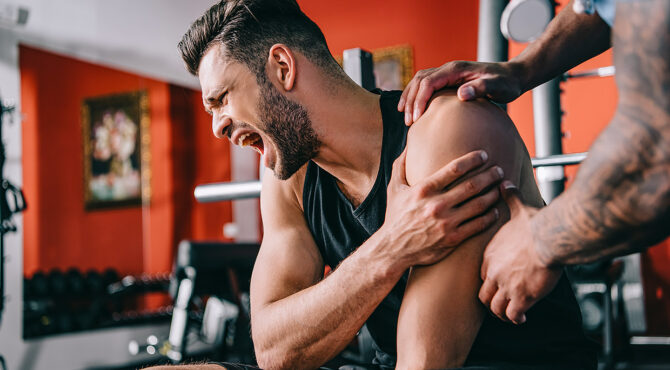If you're struggling with neck pain, you may be wondering if non-surgical remedies could offer the relief you need. Approaches like physical therapy, chiropractic care, and even acupuncture have gained traction for their potential to address underlying issues without invasive procedures. Each method targets different aspects of pain relief, from muscle tension to alignment. But what if combining these strategies could enhance your recovery even further? Let's explore the effectiveness of these remedies and how they might change your experience with neck pain.
Understanding Neck Pain Causes
Understanding the causes of neck pain is vital for finding effective relief. You might experience neck pain due to various factors, and identifying the root cause can help you target the right remedies. One common culprit is poor posture, especially if you spend long hours hunched over a computer or looking down at your phone. This improper alignment places stress on the neck muscles, leading to discomfort.
In addition to posture, muscle strains are another frequent cause. You may strain your neck from sleeping in an awkward position or engaging in activities that require repetitive motions, like painting or lifting heavy objects. Over time, these strains accumulate, resulting in persistent pain.
Another factor to ponder is age-related changes. As you get older, the discs in your spine may degenerate, leading to conditions such as cervical spondylosis. This wear and tear can cause stiffness and pain, making it essential to be aware of how aging affects your neck.
Injuries also play a significant role. If you've been in a car accident or experienced a sports injury, whiplash or other trauma can result in acute neck pain. Even minor accidents can have lasting effects.
Lastly, underlying medical conditions, such as arthritis or herniated discs, can contribute to neck pain. If you suspect that your pain may be linked to a health issue, consulting with a healthcare professional is vital for accurate diagnosis and treatment.
Benefits of Physical Therapy
Physical therapy offers you a personalized approach to tackle neck pain with customized treatment plans tailored to your specific needs.
You'll not only strengthen your neck muscles but also learn effective pain management techniques.
These benefits can greatly enhance your recovery and improve your overall quality of life.
Customized Treatment Plans
Customized treatment plans for neck pain can greatly enhance your recovery journey. When you work with a physical therapist, they'll evaluate your specific condition and tailor a program that addresses your unique needs. This personalized approach guarantees that you're not just getting generic advice but a strategy designed specifically for your situation.
One of the key benefits of a customized plan is that it focuses on your individual pain triggers and lifestyle factors. Your therapist will consider your daily activities, any previous injuries, and how your neck pain affects your overall quality of life. By addressing these aspects, you're more likely to see improvements and gain back mobility.
Moreover, customized treatment plans typically incorporate a variety of techniques, such as manual therapy, stretching, and education about proper posture. This holistic approach not only targets your neck pain but also promotes overall wellbeing.
Strengthening Neck Muscles
Strengthening neck muscles is vital for relieving pain and preventing future issues. When you engage in targeted exercises, you enhance your muscle endurance and flexibility, which can greatly reduce discomfort. Stronger neck muscles provide better support for your spine, improving your posture and reducing strain during daily activities.
Physical therapy plays an important role in this process. A physical therapist can assess your specific needs and design a personalized exercise program aimed at strengthening your neck. They'll guide you through exercises that focus on key muscle groups, ensuring you perform them correctly to avoid injury.
In addition to pain relief, strengthening your neck muscles can boost your overall functional ability. You'll likely notice an increase in your range of motion, making everyday tasks easier and more comfortable.
Regularly incorporating these exercises into your routine not only helps alleviate existing pain but also builds resilience against future neck injuries.
Pain Management Techniques
One effective approach to managing neck pain is through targeted physical therapy, which offers numerous benefits tailored to your needs.
By working with a skilled therapist, you can identify the root cause of your discomfort and develop a personalized treatment plan. This hands-on approach not only relieves pain but also promotes healing and improves mobility.
Physical therapy focuses on specific exercises that strengthen your neck and surrounding muscles. You'll learn how to perform these exercises correctly, ensuring you avoid further injury.
Additionally, your therapist may use techniques like manual therapy, which can reduce tension and improve circulation in the affected area.
Incorporating stretching and strengthening routines helps maintain flexibility and prevent future issues.
You'll also gain valuable knowledge about posture and ergonomics, allowing you to make necessary adjustments in your daily activities.
Not only does this enhance your overall well-being, but it also empowers you to take control of your recovery.
The Role of Chiropractic Care
Chiropractic care frequently plays an essential role in alleviating neck pain by addressing the underlying musculoskeletal issues. When you visit a chiropractor, they'll assess your spine and neck to identify any misalignments or tension that might be contributing to your discomfort. This hands-on approach helps restore proper alignment and function, potentially easing your pain and improving mobility.
During your sessions, your chiropractor will likely utilize spinal manipulation techniques. These adjustments aim to realign the vertebrae in your neck, which can relieve pressure on nerves and reduce inflammation. You might also experience muscle tension relief, as these adjustments often lead to improved blood flow and oxygenation in the affected areas.
In addition to adjustments, chiropractic care may incorporate therapeutic exercises tailored to your specific needs. These exercises can strengthen the muscles supporting your neck, enhance flexibility, and promote better posture. By integrating these elements into your treatment, you'll not only address your immediate pain but also work towards preventing future issues.
It's important to communicate openly with your chiropractor about your symptoms and any other treatments you're receiving. This collaboration guarantees that you're getting a thorough approach to your neck pain.
Exploring Acupuncture Techniques
As you explore alternative therapies for neck pain, acupuncture techniques can offer a unique approach to relief. This ancient practice, rooted in Traditional Chinese Medicine, involves inserting thin needles into specific points on your body. It's believed that these points correspond to energy pathways, or meridians, which can help restore balance and alleviate pain.
When you undergo acupuncture, you might feel a slight prick as the needles are inserted, but many people report feeling relaxed during the treatment. By stimulating these acupuncture points, you're encouraging your body to release endorphins, which are natural painkillers. This process can promote blood circulation and help reduce inflammation around your neck.
You may find that different acupuncture styles exist, including traditional Chinese acupuncture, dry needling, and auricular acupuncture. Each style has its own approach and focus, so it's worth exploring which one resonates with you.
For instance, dry needling targets trigger points in muscles, while auricular acupuncture focuses on points in the ear, which can influence overall body health.
It's essential to consult with a licensed acupuncturist who understands your specific condition. They can tailor a treatment plan that addresses your neck pain effectively.
While acupuncture isn't a one-size-fits-all solution, many individuals have experienced significant improvements in their neck pain after regular sessions. As you consider this option, keep an open mind and give yourself time to explore the potential benefits of acupuncture.
The Impact of Yoga
Yoga can be a powerful tool for relieving neck pain through targeted poses that stretch and strengthen the muscles.
By incorporating mindfulness and breathing techniques, you can enhance your overall relaxation and improve your body awareness.
Let's explore how these practices can help you find relief and restore balance.
Yoga Poses for Relief
When neck pain strikes, turning to yoga can offer a gentle yet effective solution. Certain yoga poses target the neck and surrounding muscles, helping to alleviate tension and restore mobility.
One beneficial pose is the Cat-Cow Stretch. Start on all fours, alternating between arching your back (Cat) and dropping your belly while lifting your head (Cow). This movement warms up your spine and relieves stiffness in your neck.
Another great option is the Child's Pose. Kneel and sit back on your heels, then stretch your arms forward on the ground while lowering your forehead. This pose promotes relaxation and gently stretches the neck.
You might also try the Seated Forward Bend. Sit with your legs extended and reach for your toes, which encourages a gentle stretch along your spine and neck.
Finally, incorporating Neck Rolls can be incredibly beneficial. While seated or standing, gently roll your head in a circular motion, easing tightness in the neck.
Remember to listen to your body and avoid any movements that cause pain. With regular practice, these yoga poses can help you find relief from neck pain and improve your overall well-being.
Mindfulness and Breathing Techniques
Incorporating mindfulness and breathing techniques into your routine can greatly enhance the benefits of yoga for neck pain relief. When you practice yoga, focusing on your breath helps you stay present, reducing stress and tension that often contribute to neck discomfort. By consciously breathing deeply and slowly, you activate your body's relaxation response, allowing tight muscles to release.
As you move through different poses, integrate mindful awareness. Notice how your body feels, and pay attention to any areas of tension in your neck. This awareness can guide you in adjusting your posture and ensuring you're not straining your neck during poses.
Try combining specific breathing techniques, like diaphragmatic breathing or alternate nostril breathing, with your yoga practice. These methods can calm your mind and enhance your overall experience.
Furthermore, dedicating a few minutes to mindfulness meditation after your yoga session can deepen your relaxation. It allows you to reflect on your practice and acknowledge the sensations in your neck and body.
Heat and Cold Therapy
Heat and cold therapy can provide significant relief for neck pain, offering a simple yet effective approach to managing discomfort. You can easily incorporate these methods into your daily routine, and they require minimal equipment.
When using heat therapy, consider a heating pad or warm towel. Applying heat increases blood flow to the area, helping relax tense muscles and alleviate stiffness. It's best to use heat for 15 to 20 minutes at a time, ensuring you don't burn your skin. You might find it helpful to apply heat before engaging in activities that could exacerbate your neck pain.
On the other hand, cold therapy can also be beneficial, especially if your neck pain stems from inflammation or injury. Ice packs or a bag of frozen peas wrapped in a cloth can provide relief by numbing the area and reducing swelling. Just like heat, apply cold therapy for 15 to 20 minutes, but be cautious not to apply ice directly to your skin to avoid frostbite.
You can alternate between heat and cold therapies for best results. This combination can help ease pain and promote healing.
Remember to listen to your body; if one method feels more effective than the other, feel free to adjust your approach. With consistent application, heat and cold therapy can become valuable tools in your neck pain management strategy, allowing you to enjoy a more comfortable daily life.
Utilizing Massage Therapy
Massage therapy can be a powerful tool for alleviating neck pain, offering both physical and mental benefits. When you choose massage, you're not just treating the symptoms; you're addressing the underlying tension and stress in your neck and surrounding muscles. This hands-on approach can help release tightness, improve blood circulation, and promote relaxation.
During a massage session, a skilled therapist targets specific areas of discomfort. They might use techniques like kneading, stroking, or applying pressure to help relieve muscle tension. As the knots in your neck loosen, you may notice an immediate reduction in pain and increased range of motion.
Plus, the release of endorphins during massage can elevate your mood, making you feel more at ease.
Regular massage can also encourage better posture. Since poor posture is often a contributing factor to neck pain, working on this aspect can lead to long-term relief. As your muscles become more balanced and aligned, you'll likely find yourself standing and sitting more comfortably.
To get the most out of massage therapy, consider incorporating it into your routine. Whether you visit a professional therapist or use self-massage techniques at home, consistency is key.
You might even explore different styles, such as Swedish, deep tissue, or trigger point massage, to see which one works best for you. Taking the time to prioritize your neck health through massage can lead to significant improvements in your overall well-being.
Essential Lifestyle Adjustments
Making essential lifestyle adjustments can greatly impact your neck pain and overall well-being. By making a few changes in your daily routine, you can alleviate discomfort and promote better posture. Here are some key adjustments you might consider:
- Ergonomic Workspace: Verify your workstation is set up to promote good posture. Your computer screen should be at eye level, and your chair should support your lower back.
- Regular Breaks: Take short breaks throughout the day. Stand up, stretch, and move around to relieve tension in your neck and shoulders.
- Mindful Posture: Be aware of your posture, whether you're sitting, standing, or walking. Keep your shoulders relaxed and aligned with your ears to prevent strain.
- Hydration and Nutrition: Staying hydrated and eating a balanced diet can support muscle health. Proper nutrition helps reduce inflammation and maintain overall body function.
Incorporating these adjustments into your daily life isn't just about reducing neck pain; it's also about enhancing your overall well-being.
The changes may seem small, but together, they can lead to significant improvements in both your comfort levels and your daily functioning.
Evaluating Complementary Approaches
In addition to lifestyle adjustments, exploring complementary approaches can provide further relief from neck pain. You might consider therapies like acupuncture, which involves inserting thin needles into specific points on your body. Many people find relief from tension and pain through this ancient practice, as it may help release endorphins and improve blood flow.
Chiropractic care is another option worth evaluating. A chiropractor can perform spinal adjustments to improve alignment, potentially alleviating neck discomfort. These adjustments may also enhance your overall mobility and reduce tension in surrounding muscles.
Massage therapy can also be beneficial. Regular sessions can help ease muscle tightness and improve circulation, allowing you to relax and experience less pain. You can even try self-massage techniques at home, using tools like a foam roller or massage ball.
Physical therapy is another complementary approach you might consider. A physical therapist can design a personalized exercise program that strengthens your neck and upper back muscles, improving posture and reducing strain. Incorporating these exercises into your routine can lead to lasting relief.
Lastly, don't overlook the power of mindfulness practices like yoga or meditation. These techniques can help manage pain by promoting relaxation and reducing stress, which often exacerbates neck issues.
As you explore these options, remember to consult with your healthcare provider to find the right combination of treatments tailored to your needs.
Conclusion
Incorporating non-surgical remedies can truly transform your neck health. By understanding the causes of your pain and utilizing therapies like physical therapy, chiropractic care, and massage, you can find significant relief. Don't forget the benefits of acupuncture, yoga, and simple lifestyle adjustments. By taking a holistic approach, you're not just treating symptoms—you're addressing the root causes. So, why not explore these options and take proactive steps toward a pain-free life? Your neck will thank you!



